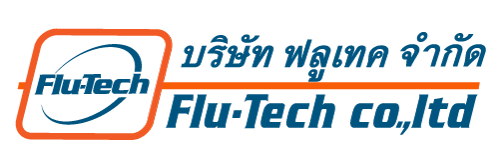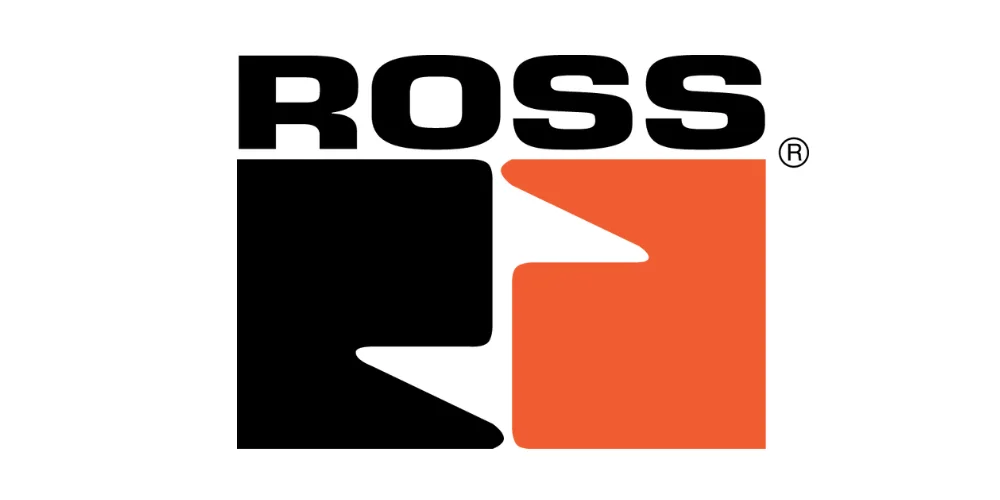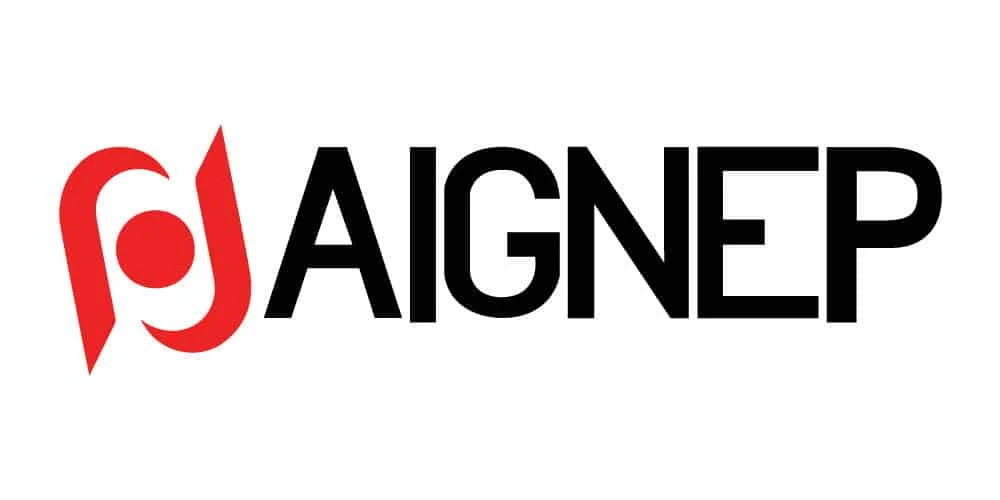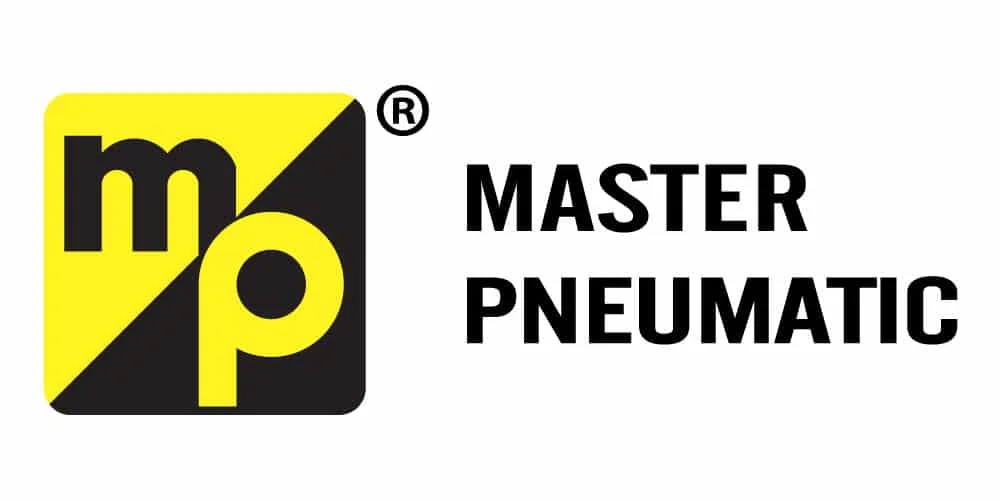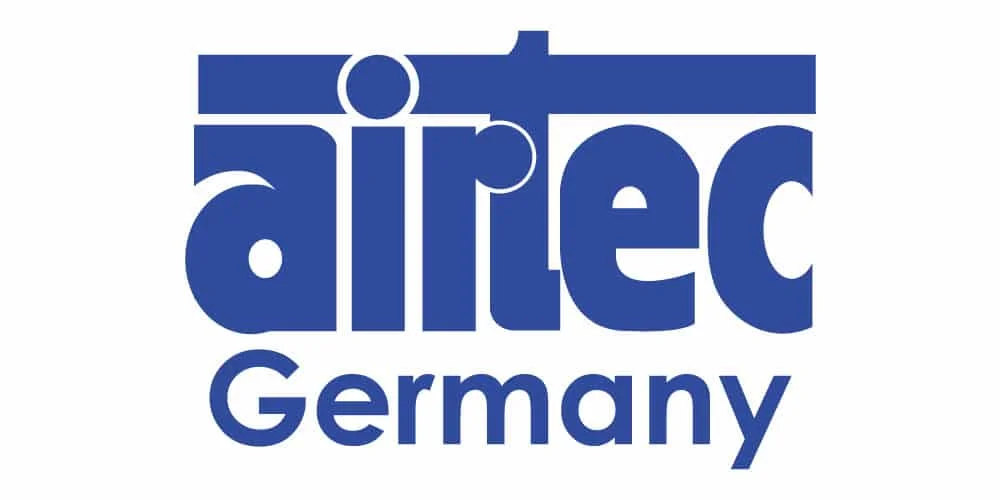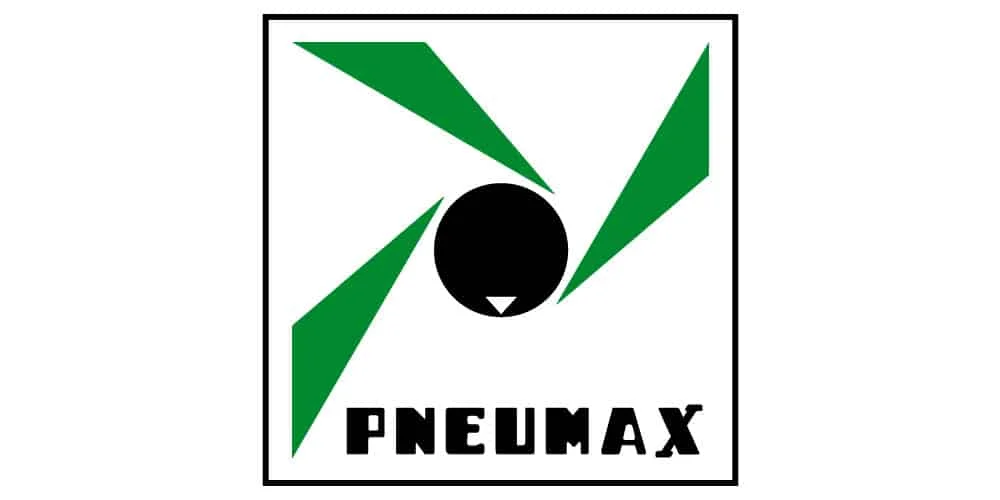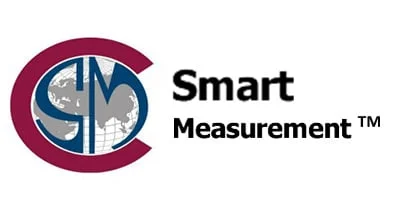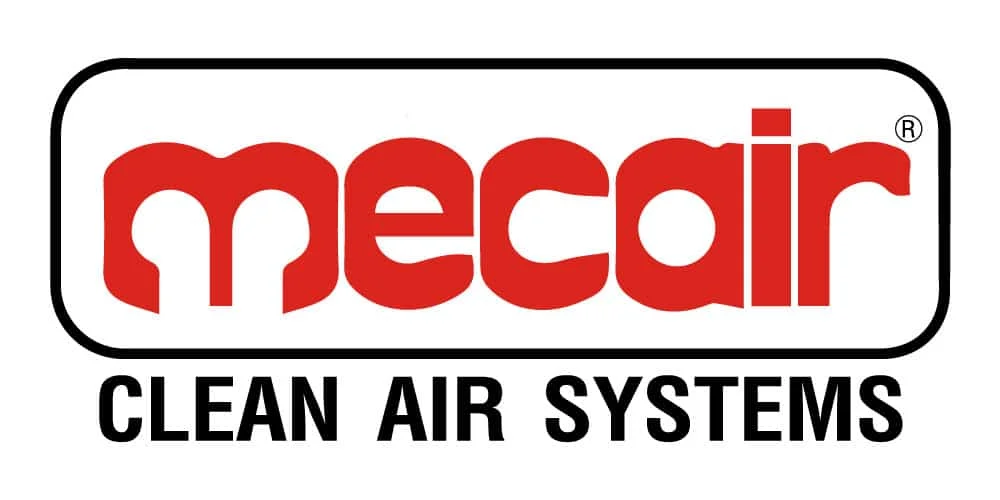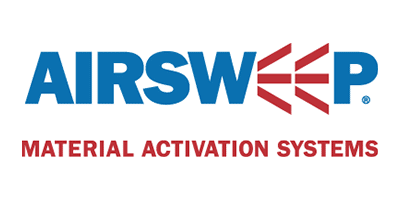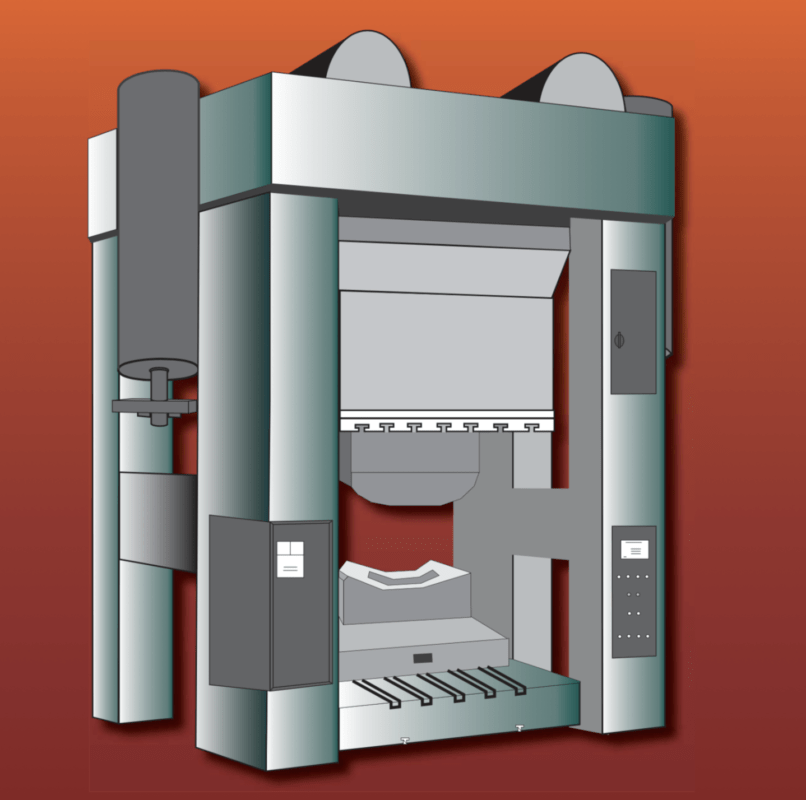Counterbalance for Mechanical Stamping Presses
A pneumatic counterbalance system compensates for the weight of the slide and upper die on a press. The system also reduces gear and drive component damage that occurs from high force loadings when the slide reverses direction. The standard OEM system includes two or more air cylinders attached between the slide and main frame, a pressure control regulator, a check valve, a surge tank and a manual bleed-off valve. Surge tanks store the air displaced from the cylinders, since it would be cost prohibitive to refill the system with every stroke of the press. The regulator is used to set the correct pressure for the combined weight of the slide plus the die. The OEM provides a chart for the proper pressure setting of any given die weight. A check valve keeps pressure within the system, while a bleed-off valve allows for manual removal of system pressure for maintenance or repair.
 During the downward stroke of the press, gravity acts upon the slide and die, pulling them away from the press drive and opening up many small tolerances. When the upper and lower dies meet, the upper die decelerates until these openings close and the drive begins to “push” through the work. After this initial “shock-loading”, the die forms the part and is then immediately reversed to “pull” the die back up, which opens up all of the tolerances once again. This shock-loading occurs twice on every stroke of the press, causing additional wear and damage to drive components and dies.
During the downward stroke of the press, gravity acts upon the slide and die, pulling them away from the press drive and opening up many small tolerances. When the upper and lower dies meet, the upper die decelerates until these openings close and the drive begins to “push” through the work. After this initial “shock-loading”, the die forms the part and is then immediately reversed to “pull” the die back up, which opens up all of the tolerances once again. This shock-loading occurs twice on every stroke of the press, causing additional wear and damage to drive components and dies.
An “under-balanced” counterbalance system allows for tremendous shock loads to occur and increases operating costs because of the heavier load that must be picked up by the motor. An “overbalanced” counterbalance system consumes a great deal of flywheel energy, reducing tonnage available at the part as well as the possibility of the press becoming “stuck on bottom” … where there is not enough flywheel energy available to overcome the die separation, loading and reversal forces of the press.

The ROSS automatic counterbalance system integrates modern air valve technology
with electrical controls to monitor and maintain appropriate counterbalance pressures. Is there anything wrong with the equipment that came on the press? No, but it is a system with minimal performance characteristics. It is desirable to correct pressures as quickly as possible and to maintain them. The standard OEM system does not do this. The recovery time to increase pressure is long with the regulator and it has no way of decreasing pressure. Because the regulator set pressure is the same as the counterbalance setting, flow through the regulator is very slow and even minor pressure changes take much time.
The recovery time to increase pressure is long with the regulator and it has no way of decreasing pressure. Because the regulator set pressure is the same as the counterbalance setting, flow through the regulator is very slow and even minor pressure changes take much time.
The ROSS automatic counterbalance system allows for the maximum amount of “fill” air per cycle because valves are adjusting pressures. A unique check valve design feature eliminates the need to de-energize the fill valve during a press cycle and eliminates “back flushing” of air into the plant air system.
Reference: Ross Controls
สำหรับข้อมูลเพิ่มเติม โปรดติดต่อเรา:
โทร: 02-384-6060 | ไลน์: @flutech.co.th | อีเมล: [email protected] | เฟสบุ๊ค: @flutech.co.th
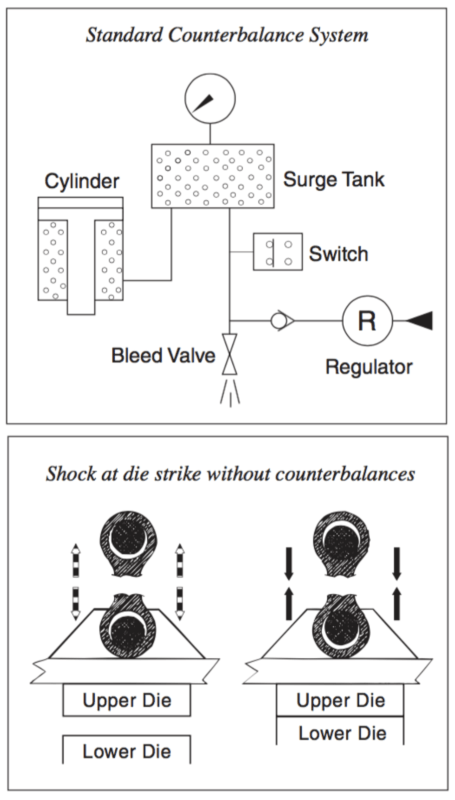
 During the downward stroke of the press, gravity acts upon the slide and die, pulling them away from the press drive and opening up many small tolerances. When the upper and lower dies meet, the upper die decelerates until these openings close and the drive begins to “push” through the work. After this initial “shock-loading”, the die forms the part and is then immediately reversed to “pull” the die back up, which opens up all of the tolerances once again. This shock-loading occurs twice on every stroke of the press, causing additional wear and damage to drive components and dies.
During the downward stroke of the press, gravity acts upon the slide and die, pulling them away from the press drive and opening up many small tolerances. When the upper and lower dies meet, the upper die decelerates until these openings close and the drive begins to “push” through the work. After this initial “shock-loading”, the die forms the part and is then immediately reversed to “pull” the die back up, which opens up all of the tolerances once again. This shock-loading occurs twice on every stroke of the press, causing additional wear and damage to drive components and dies. The ROSS automatic counterbalance system integrates modern air valve technology
The ROSS automatic counterbalance system integrates modern air valve technology